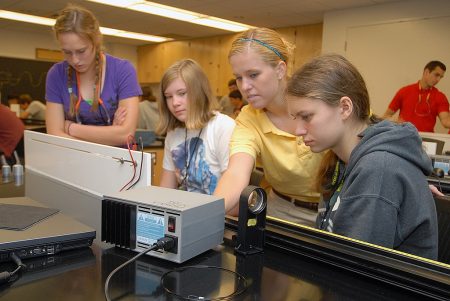
We modern Americans believe that anything we can say can be so. In other words, if we can think of something, we can make it happen. But is this always true?
Of course not, else I wouldn’t be writing this sentence. Just because you want something to happen and try really hard to make it happen, doesn’t mean it’s going to happen. A case in point is legislating STEM in education — the hyper emphasis on the information modalities of science, technology, engineering and mathematics. We think we can make more of this if we just teach it hard enough to enough children.
If this were true, it would stand to reason that kids would get better and better scores on standardized tests, particularly math scores. But they don’t. (https://nap.nationalacademies.org/read/13158/chapter/3) Surprise, surprise, right? But crazy as this sounds, many people actually are surprised when kids “score poorly” on standardized tests, not taking into account the fact that we’re testing them for skills that many of them cannot fully learn because — their talents lie elsewhere.
This is true for the majority of people, whose aptitudes may include language, logic, history, education, communication, psychology, music, art, writing, and much more. They are the 90%.
Taken together, the percentage of the population achieving high performance in STEM fields is less than 10%, mostly male. Let’s make a crashingly huge assumption that a measly ten percent of people have a basic aptitude for the subject areas in which all of our children are expected to excel. If you consider that only 30% or so of students meet national proficiency standards (a lower bar than excellence), it becomes clear that most kids are probably not cut out for careers in STEM. Promoters of STEM like to say that kids can be made to score well in STEM whether they have an aptitude for those subjects or not, but that has not actually been proven true in the real world.
Consequently, today’s curriculum priorities give kids with skills other than STEM about a 10% chance of success in our education system, because unless they happen to be one of the 10% of kids with strong math skills as well, they’re going to fail by the standards our society is testing for.
Never mind that a student has broad interests, writes well, has excellent reading comprehension, understands basic psychological principles, and is able to understand and communicate information to others, just for instance. Those skills are not in demand — only science, technology, engineering, and math really matter, or so the latest propaganda would have us believe.
Thus, if you’ve been wondering why STEM makes you uneasy when you think about education policy — assuming that sometimes you think about education policy — then here is your potential answer: the same rough number of students who were good at STEM subjects before STEM education will be good at STEM after all students are forced to study STEM. Increasing excellence in STEM is possible but only by a tiny incremental amount. Most people will continue to have, at best, a passing understanding of STEM, while losing out on the positive side of education, which is learning subjects you’re interested in and have an aptitude for. Meanwhile, you risk giving low self esteem to a whole generation of people, who have the misfortune to be good at the wrong things according to early 21st century standards.
What should we do then? The short answer is, rethink STEM, which is an admirable set of disciplines, but not for everyone, pure and simple. Nor are STEM subjects best just because fewer people excel at them. All areas of knowledge are valuable and should be valued.
With that in mind, we could create more educational tracks, instead of just one. For instance, there should be a language/humanities track. There’s STEM light, for kids who aren’t going to go on to research science or engineering. There’s your arts program. And there’s your hands-on program for trades and business. You might want more programs in your imaginary education curriculum, but the basic take-away from all this is that people are diverse and have diverse skill sets. Our public school curriculum needs to acknowledge this for the good of our students and our society as a whole.
Oh, and one more thing — when they show images of girls joyously playing STEM games, constructing complicated LEGO contraptions, and looking like cute, smart, little scientists, that’s mostly just propaganda. In all my years as a girl, in the company of other girls, including girls who were “good at math,” we didn’t do much STEM stuff in our free time. Among my friends, we were much more likely to play a game (tag, dodgeball) or hang around talking, than to engage in science. Some of my friends who were good at math even played with dolls. In my case, I liked to make things (arts, crafts) and I liked to study nature (rocks and minerals, insects, butterflies and moths, pond life….) None of these subjects get much play in today’s STEM programs. They aren’t techie enough.
So there you are, a ramble through STEM education and the real children on which it is inflicted. Bottom line: we are what we are. We can pretend otherwise, but that wouldn’t be very scientific of us, would it?
Originally written: Nov 2023
Photo credit: U.S. Navy photo by Mass Communication Specialist 1st Class Chad Runge, Public domain, via Wikimedia Commons




